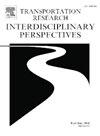炎热干旱发展中地区的食物沙漠:阿联酋阿布扎比的食物可及性分析
IF 3.9
Q2 TRANSPORTATION
Transportation Research Interdisciplinary Perspectives
Pub Date : 2025-06-26
DOI:10.1016/j.trip.2025.101458
引用次数: 0
摘要
本研究通过分析邻里和超级街区尺度上的食物可及性,考察了阿布扎比九个社区的食物环境。在800 m阈值范围内测量了样地质心到食品零售的距离,并根据新鲜农产品的可负担性对食品零售地点进行了分类。结果评估了可负担性(主要最近的零售类型),邻近性(零售计数)和多样性(零售类型计数)。结果显示,虽然被研究的社区通常不面临与食品销售点的物理接近问题,但在多样性和可负担性方面的可达性挑战仍然存在。在社区尺度上,食品零售密度和空间分布是最重要的影响因素,只有两个社区的物理可达性有限。超级街区尺度分析揭示了社区内部的差异,在高通达性社区中,一些超级街区的食品零售通达性水平较低,进一步证明了分析量表对食品通达性评价的影响。这突出了双尺度分析对于捕捉食物环境的地方变化的重要性。主成分分析(PCA)发现土地利用组合和食品零售密度是最重要的城市形态属性,在所有可达性水平上都是关键因素。网络交叉口密度和地块属性对可达性也有影响,但影响程度较小。杂货店的主导地位影响了食品的多样性和可负担性,凸显了阿布扎比规划政策的差距。这些发现为加强食品安全和完善食品零售分配策略提供了有价值的见解。本文章由计算机程序翻译,如有差异,请以英文原文为准。
Food deserts in hot arid developing regions: An analysis of food accessibility in Abu Dhabi, UAE
This study examines food environments in nine Abu Dhabi neighborhoods by analyzing food accessibility at neighborhood and superblock scales. Distances from plot centroids to food retail within an 800-m threshold were measured, and food retail locations were classified based on the affordability of fresh produce. Results assessed affordability (dominant closest retail type), proximity (retail count), and diversity (retail type count). Results revealed that while the studied neighborhoods generally do not face issues with physical proximity to food outlets, accessibility challenges in terms of diversity and affordability persist. At the neighborhood scale, food retail density and spatial distribution were the most influential factors, with only two neighborhoods showing limited physical accessibility. Superblock-scale analysis revealed disparities within neighborhoods, with some superblocks in highly accessible neighborhoods having lower levels of food retail accessibility, further proving the impact of the analysis scale on food accessibility assessment. This highlights the importance of dual-scale analysis for capturing local variations in food environments.
Principal Component Analysis (PCA) identified land-use mix and food retail density as the most significant urban form attributes, consistently emerging as key factors across all levels of accessibility. Network intersection density and plot attributes also influenced accessibility, though to a lesser extent. The dominance of grocery stores impacts food diversity and affordability, highlighting gaps in Abu Dhabi’s planning policies. These findings provide valuable insights for enhancing food security and refining food retail allocation strategies.
Principal Component Analysis (PCA) identified land-use mix and food retail density as the most significant urban form attributes, consistently emerging as key factors across all levels of accessibility. Network intersection density and plot attributes also influenced accessibility, though to a lesser extent. The dominance of grocery stores impacts food diversity and affordability, highlighting gaps in Abu Dhabi’s planning policies. These findings provide valuable insights for enhancing food security and refining food retail allocation strategies.
求助全文
通过发布文献求助,成功后即可免费获取论文全文。
去求助
来源期刊

Transportation Research Interdisciplinary Perspectives
Engineering-Automotive Engineering
CiteScore
12.90
自引率
0.00%
发文量
185
审稿时长
22 weeks
 求助内容:
求助内容: 应助结果提醒方式:
应助结果提醒方式:


